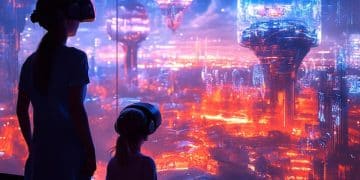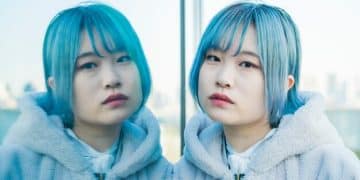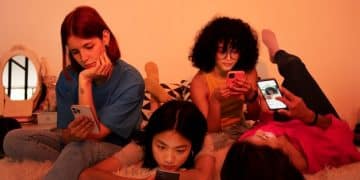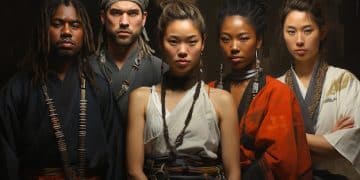K-Drama LGBTQ+ Representation: Progress & Challenges in US Streaming
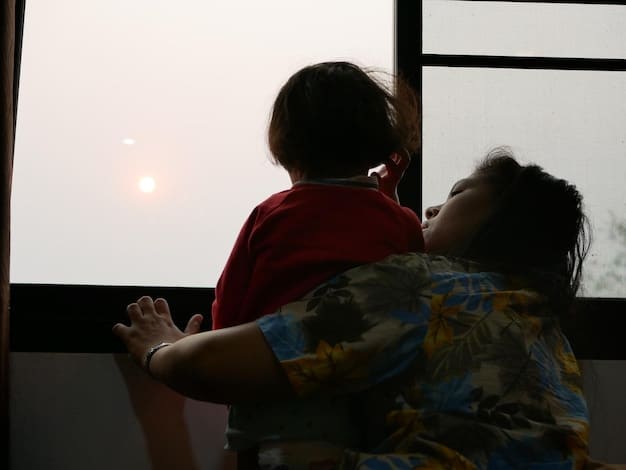
The evolving landscape of Korean drama (K-drama) LGBTQ+ representation on US streaming platforms reflects a complex interplay between traditional cultural norms and increasing global demands for diverse narratives, showcasing both tentative progress and persistent challenges in authentic inclusion.
In recent years, the global phenomenon of K-dramas has captivated audiences worldwide, with their compelling storytelling, high production values, and charismatic casts. As this influence expands, particularly on US streaming platforms, a critical question emerges: how accurately does Korean Drama LGBTQ+ Representation: A Critical Look at Progress and Challenges in US Streaming reflect the diverse audiences that consume them? This article will delve into the nuanced portrayal of LGBTQ+ characters and themes, examining the strides made, the hurdles that remain, and the implications for both creators and viewers.
the historical context of LGBTQ+ portrayals in K-dramas
The journey of LGBTQ+ representation in Korean dramas has been a gradual and often hesitant one, deeply rooted in South Korea’s conservative social landscape. For decades, mainstream media largely avoided or overtly condemned non-heteronormative relationships, reflecting prevailing societal attitudes where discussions on sexuality outside of traditional frameworks were, and to some extent still are, considered taboo.
Early portrayals, when they existed, were frequently stereotypical or used as comic relief, often depicting LGBTQ+ characters as tragic figures, villains, or subjects of pity. These narratives rarely explored the depth of their experiences or offered positive resolutions. The focus was often on the ‘discovery’ or ‘struggle’ rather than acceptance or celebration. This limited and often negative portrayal not only reinforced stigma but also deprived LGBTQ+ individuals of authentic reflections of their own lives and identities on screen.
However, the past decade has seen a notable, albeit slow, shift. The rise of digital platforms and increased global exposure have put pressure on the Korean entertainment industry to adapt. While direct and explicit LGBTQ+ storylines remain rare in mainstream network dramas, cable channels and web dramas have shown more willingness to experiment. This nascent progress is primarily driven by changing demographics, growing social awareness, and the influence of international audiences who increasingly demand more inclusive content. However, these changes are often subtle, sometimes relying on subtext and queer-coding rather than overt declarations, leaving much to interpretation.
Despite these incremental changes, the industry continues to grapple with balancing traditional values, audience expectations, and global market demands. The conservative leanings of key broadcast networks and major production companies mean that truly groundbreaking representations are often relegated to smaller, independent productions or web series, which have less reach than their mainstream counterparts. This creates a dichotomy where progress is visible but often confined to niche platforms, limiting broader societal impact and accessibility for a wider audience, particularly those outside of South Korea.
subtlety and subtext: navigating queer coding in K-dramas
One of the most pervasive elements in Korean drama LGBTQ+ representation is the heavy reliance on subtlety and subtext, often referred to as “queer coding.” This approach involves hinting at same-sex attraction or gender non-conformity through specific character traits, ambiguous dialogue, or profound emotional bonds that transcend platonic friendship, without overtly labeling them as queer. It’s a delicate dance, allowing for plausible deniability while simultaneously appealing to viewers who pick up on these cues.
the art of subtle hints
Queer coding often manifests in several ways, creating layers of meaning for discerning viewers. Intense, emotionally charged friendships between same-sex characters, often referred to as “bromances” or “womances,” sometimes cross into territory that audiences interpret as romantic. Characters might exhibit non-traditional gender expressions or challenge societal norms in ways that resonate with LGBTQ+ experiences, even if their sexual orientation is never explicitly stated.
- Intense friendships: Deep emotional bonds between same-sex characters that feel more profound than typical platonic relationships.
- Ambiguous dialogue: Lines of dialogue that can be interpreted in multiple ways, hinting at underlying attractions.
- Visual cues: Specific costuming, mannerisms, or camera work that suggest a character’s non-heteronormative identity.
- Character archetypes: Portraying characters who defy traditional gender roles or expectations in ways that align with queer identities.
This method offers several benefits for creators. It allows them to introduce LGBTQ+ themes without alienating more conservative audiences or facing direct backlash. It also provides a creative outlet for exploring complex human emotions and relationships without the explicit need for societal approval. For LGBTQ+ viewers, queer coding can be a source of validation and representation, allowing them to see themselves, even indirectly, in stories where overt representation is still scarce.
the challenges of subtext
However, the pervasive use of subtext presents significant challenges and criticisms. While it offers a form of representation, it often stops short of explicit affirmation, leaving LGBTQ+ characters in a realm of suggestion rather than undeniable presence. This ambiguity can be frustrating for viewers seeking clear, unambiguous narratives that celebrate diverse sexualities and gender identities. It also puts the onus on the audience to ‘decode’ the queer elements, which can feel like a compromise rather than genuine inclusion.
Moreover, depending solely on subtext risks perpetuating the idea that LGBTQ+ identities should remain hidden or unspoken. It fails to normalize same-sex relationships in the same way that heterosexual relationships are openly depicted, thereby reinforcing the idea that they are somehow inherently less legitimate or acceptable for public viewing. This can contribute to a sense of invisibility and marginalization for LGBTQ+ individuals both on and off screen, limiting the potential for K-dramas to be genuine agents of social change and acceptance.
the impact of US streaming on K-drama diversity
The proliferation of K-dramas on US streaming platforms—such as Netflix, Viki, and Hulu—has dramatically amplified their global reach and influence. This accessibility has not only introduced new audiences to Korean culture but has also inadvertently created a new dynamic for content creation, particularly concerning diversity and representation. US audiences, accustomed to a wider spectrum of portrayals in their own media, often bring different expectations and demands to the content they consume.
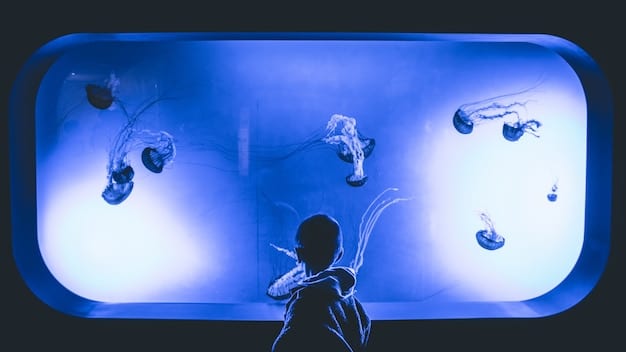
With millions of subscribers in the US, platforms like Netflix have become crucial gatekeepers and facilitators of K-drama content. This global exposure means that Korean production companies and broadcasters are increasingly aware of international audience preferences and evolving social norms. The financial incentives are also significant; highly diverse and inclusive content tends to perform well in global markets, including the US, where there’s a strong demand for stories that reflect a broad range of human experiences.
This commercial imperative has, in some instances, nudged the Korean industry towards more progressive storylines. While direct influence is difficult to quantify, the sheer volume of international feedback and the success of more inclusive Western media undeniably play a role. Streaming platforms themselves sometimes commission original K-drama content, and these commissions may come with certain diversity considerations or encourage content that resonates with a global, rather than solely domestic, audience.
However, it’s crucial to acknowledge that this impact is not a wholesale transformation. The primary drivers for K-drama production still remain within South Korea, influenced by domestic cultural values, regulations, and audience sensitivities. While US streaming provides a powerful new distribution channel and a source of revenue, it doesn’t fundamentally alter the core creative processes overnight. Progress is often incremental, reflected in small but significant steps rather than radical shifts.
The dialogue between content creators and a global audience is becoming more robust. Social media, in particular, allows US viewers to directly express their desires for more inclusive representation, creating a feedback loop that influences future productions. This dynamic pressure from engaged international fan bases acts as a catalyst for change, even if that change is slow and met with internal resistance. Ultimately, US streaming platforms facilitate a broader conversation about diversity in K-dramas, gradually shaping the narratives that emerge from Korea and reach a worldwide audience.
case studies: notable examples and missed opportunities
Examining specific K-dramas highlights the trajectory of LGBTQ+ representation, showcasing both commendable efforts and areas where opportunities for deeper inclusion were missed. These examples provide concrete insights into how the industry grapples with depicting non-heteronormative characters and relationships.
steps forward, however small
Several K-dramas have been lauded for their attempts, however subtle, at LGBTQ+ representation. In “Itaewon Class,” the character of Ma Hyun-yi, a transgender woman, marked a significant moment. While her storyline primarily focused on her journey of acceptance within her workplace and family rather than her romantic life, it brought a transgender character into a mainstream drama with dignity and complexity, defying common sensationalized portrayals. This was a notable step, demonstrating a willingness to address gender identity in a sympathetic light.
Another example is the web series “Where Your Eyes Linger” and “Light On Me,” which are explicitly Boys’ Love (BL) dramas. These productions, while often catering to a specific niche audience, offer direct portrayals of same-sex male relationships. Their success indicates a growing market for such content and a willingness among certain demographics to consume openly queer narratives. These dramas often explore themes of first love, coming out, and societal acceptance, providing much-needed positive representation, even if they often romanticize relationships and face criticisms for not always depicting realistic challenges.
Beyond explicit BLs, some mainstream dramas have excelled in conveying profound, non-romantic queer-coded bonds. “Goblin”‘s intricate relationship between the Goblin and the Grim Reaper, though ostensibly platonic, resonated deeply with many LGBTQ+ viewers due to its intense emotional intimacy and often dramatic confessions of affection, whether intentional or not. Similarly, female friendships in dramas like “Because This Is My First Life” often showcase powerful bonds that viewers interpret as showcasing the strength and diversity of love beyond traditional romantic paradigms.
- “Itaewon Class” (2020): Featured a transgender character, Ma Hyun-yi, portrayed with dignity and focused on her journey of self-acceptance.
- “Where Your Eyes Linger” (2020) & “Light On Me” (2021): Explicit Boys’ Love (BL) web dramas openly depicting gay romantic relationships.
- “Goblin” (2016): Exhibited a strong, emotionally charged male friendship that many viewers interpreted as queer-coded.
These examples, while varied in their approach and impact, signify a gradual evolution. They demonstrate that the conversation around LGBTQ+ issues is slowly making its way into mainstream and niche K-drama productions, driven by a combination of internal creative pushes and external audience demand.
missed opportunities and ongoing challenges
Despite these strides, many K-dramas continue to fall short, reflecting persistent hesitations and missed opportunities. The most common pitfall is the queer-baiting phenomenon, where shows hint at same-sex attraction to attract LGBTQ+ viewers, only to pivot to heterosexual relationships or leave any queer elements ambiguous by the series’ end. This can be frustrating and feel disingenuous, as it uses queer themes for marketing without delivering genuine representation.
Another prevalent issue is the lack of explicit, healthy, and integrated LGBTQ+ characters in mainstream dramas. When queer characters do appear, their storylines are often heavily focused on their “struggle” or “tragic” fate, rather than presenting them as fully realized individuals navigating diverse life experiences like their heterosexual counterparts. Positive, everyday portrayals of LGBTQ+ individuals in romantic relationships, families, or professional settings remain largely absent from prime-time network productions.
Consider the overwhelming prevalence of “no-romance” male friendships in dramas, which, while valuable in their own right, sometimes feel like a deliberate avoidance of exploring deeper connections that could be interpreted as romantic. Similarly, many dramas introduce characters who are implied to be queer but never formally “come out” or have their sexual orientation confirmed, leaving their identities perpetually in the subtext. This cautious approach, while understandable given the cultural context, ultimately limits the potential for K-dramas to foster greater understanding and acceptance of LGBTQ+ communities globally and within Korea.
The continued reliance on tropes, like the “gay best friend” who exists solely to support a heterosexual lead, or the ‘effeminate’ male character used for comedic effect, also represents missed opportunities for nuanced and respectful portrayal. These instances highlight the need for more diverse writers, directors, and producers who can push boundaries and offer more authentic, less stereotypical, perspectives on LGBTQ+ lives.
censorship and cultural conservatism in korea
Understanding the landscape of LGBTQ+ representation in Korean dramas requires an examination of the underlying forces of censorship and cultural conservatism that heavily influence content creation. While global streaming platforms have opened new avenues, the domestic production environment remains tightly coupled with traditional values and societal norms.
South Korea is a deeply Confucian society, where traditional family structures, gender roles, and heteronormativity are strongly emphasized. These deeply ingrained cultural values often perceive homosexuality or gender non-conformity as deviations from the norm, leading to societal discomfort or outright disapproval. This cultural conservatism translates directly into the media landscape, where content perceived as challenging these norms can face significant backlash from public opinion, religious groups, and pressure from government bodies.
influencing media production
Official censorship, while perhaps not as overt as in some other nations, exists in South Korea through broadcast regulations and self-censorship within the entertainment industry. The Korea Communications Standards Commission (KCSC) monitors content for “public decency” and “harmful information,” provisions that can be broadly interpreted to restrict LGBTQ+ portrayals. Broadcasters, fearing fines, public outcry, or reduced advertising revenue, often err on the side of caution, leading to a prevalent culture of self-censorship.
- KCSC Regulations: Government oversight body that can impose sanctions for content deemed inappropriate.
- Public Opinion: Significant influence from conservative segments of the population, often leading to protests or boycotts.
- Advertiser Pressure: Companies may withdraw sponsorship from shows perceived as controversial.
This conservative environment often means that direct and positive LGBTQ+ romantic relationships are rare on major networks. When they do appear, they are often in niche web dramas or cable channels with smaller audiences, or they are heavily coded and ambiguous, as discussed previously. The commercial imperative to appeal to a broad domestic audience often outweighs the desire to push progressive boundaries, particularly for high-budget productions that rely on widespread appeal.
Furthermore, the lack of comprehensive anti-discrimination laws for LGBTQ+ individuals in South Korea means there are fewer legal protections for queer content creators or performers, reinforcing the industry’s cautious approach. This creates a challenging environment where even sympathetic portrayals are carefully navigated to avoid potential controversy, leading to content that often shies away from explicit declarations of identity or affection.
The global reach of K-dramas through US streaming services creates a unique tension. While there’s pressure from international audiences for more inclusive content, the inherent cultural conservatism and regulatory environment in South Korea continue to act as significant brakes on rapid change. This delicate balance reflects the ongoing struggle between cultural preservation and globalized artistic expression, making the future evolution of LGBTQ+ representation in K-dramas a nuanced and complex trajectory, often advancing in small, measured steps rather than giant leaps.
the road ahead: future trends and audience expectations
The trajectory of LGBTQ+ representation in Korean dramas is at a pivotal juncture, influenced by both internal societal shifts and global audience demands. While progress has been incremental, several trends suggest a potentially more inclusive future, even as significant challenges persist. The evolving expectations of international viewers, particularly those in the US, play a crucial role in shaping these trends.
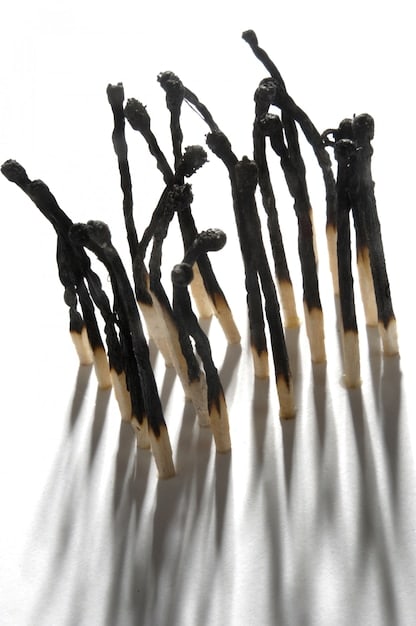
emerging trends and opportunities
One of the most encouraging trends is the continued rise of Boys’ Love (BL) and Girls’ Love (GL) web dramas. Platforms like Viki and YouTube have become fertile ground for these direct LGBTQ+ narratives, which, while sometimes criticized for their simplistic portrayals or focus on physical attractiveness, nonetheless provide explicit representation that is largely absent from mainstream terrestrial television. The success of these web-based dramas demonstrates a viable market and a hunger for overt LGBTQ+ storylines, potentially paving the way for more nuanced and complex portrayals in the future.
Secondly, the increasing investment of global streaming giants like Netflix in original Korean content offers a significant opportunity. These platforms, often operating with different editorial guidelines and a global audience in mind, may be more inclined to commission or acquire K-dramas that push the boundaries of representation. Their financial backing also reduces the reliance on traditional Korean broadcasters, potentially allowing for more creative freedom in exploring diverse themes and characters. As they compete for global subscribers, diverse and inclusive content becomes a valuable asset.
Furthermore, as South Korea’s younger generations become more open-minded, and as LGBTQ+ rights movements gain more visibility, albeit slowly, societal attitudes may gradually shift. This internal change, coupled with the external pressure from international audiences and the commercial success of inclusive content, could lead to a more accepting environment for LGBTQ+ narratives in mainstream K-dramas. The increasing number of LGBTQ+ K-pop idols and public figures also contributes to breaking down stigma and normalizing diverse identities, indirectly influencing the drama landscape.
audience expectations and continued challenges
For US audiences, the expectation is moving beyond mere subtext or tokenism towards authentic, multi-dimensional, and integrated LGBTQ+ representation. Viewers seek characters whose LGBTQ+ identity is a part of their being, but not their sole defining characteristic. They desire healthy, affirming relationships and storylines that reflect the complexities of queer life without resorting to stereotypes, tragedy porn, or queer-baiting. This demand for genuine inclusion puts pressure on the industry to evolve.
However, significant challenges remain. Deep-seated cultural conservatism and the power of traditional media outlets continue to exert a strong influence. The fear of backlash from conservative groups or government bodies may still deter major networks from greenlighting overtly LGBTQ+ projects. Additionally, while web dramas offer a space for experimentation, they often lack the production budgets and wide reach of mainstream network dramas, limiting their broader impact on societal perceptions.
Another challenge lies in ensuring that any increased representation is not merely performative but genuinely contributes to understanding and acceptance. This means moving beyond generic portrayals and striving for narratives that reflect the diversity within the LGBTQ+ community, including different identities, ages, and backgrounds. The road ahead for Korean Drama LGBTQ+ representation is complex, but the increasing dialogue between creators and a global audience suggests a future of slow, yet meaningful, progress.
| Key Point | Brief Description |
|---|---|
| 🇰🇷 Cultural Context | South Korea’s conservative norms historically limited explicit LGBTQ+ representation in K-dramas. |
| 🎭 Subtle Portrayals | Many K-dramas use queer-coding and subtext, implying LGBTQ+ themes without overt declarations. |
| 🌍 Streaming Impact | US streaming platforms increase global demand for diversity, subtly influencing K-drama content. |
| 🚀 Future Outlook | Emerging trends like BL dramas and global investment suggest gradual, more explicit inclusions. |
frequently asked questions
▼
Limited representation stems primarily from South Korea’s cultural conservatism and traditional societal norms. Broadcasters often self-censor to avoid backlash from conservative groups and adhere to strict broadcasting regulations, prioritizing content that aligns with perceived public decency standards. This cautious approach affects major network productions aiming for mass appeal.
▼
Queer coding refers to hinting at same-sex attraction or non-heteronormative identities through subtle cues, dialogue, or intense emotional bonds, without explicitly stating them. It allows creators to introduce LGBTQ+ themes cautiously, appealing to discerning viewers while maintaining plausible deniability for broader audiences, but it often leaves representation in an ambiguous space.
▼
US streaming platforms expose K-dramas to a global audience with diverse expectations for inclusive content. This increased international demand and financial investment incentivize Korean production companies to subtly explore more diverse narratives, though domestic cultural factors still heavily influence content creation. The influence is more about gradual nudges than immediate shifts.
▼
Yes, but primarily in web dramas or cable series, rather than mainstream network productions. Examples include Boys’ Love (BL) dramas like “Where Your Eyes Linger” and “Light On Me,” which overtly depict gay male relationships. Mainstream dramas like “Itaewon Class” have featured transgender characters, addressing gender identity with dignity, marking notable but cautious steps.
▼
Challenges include persistent cultural conservatism, governmental regulations, and the entertainment industry’s self-censorship. Overcoming the reliance on stereotypes and queer-baiting is also crucial. The industry needs to move towards more authentic, multi-dimensional, and everyday portrayals of LGBTQ+ characters that are integrated seamlessly into narratives rather than just token additions.
conclusion
The journey of LGBTQ+ representation in Korean dramas is a complex narrative of tentative progress amidst enduring challenges. While deeply rooted cultural conservatism and regulatory frameworks in South Korea continue to shape content, the pervasive influence of global streaming platforms, particularly in the US, is slowly but surely pushing the boundaries. From subtle queer coding to the emergence of explicit Boys’ Love dramas, the landscape is evolving, driven by both a growing internal Korean awareness and the undeniable demand from diverse international audiences for more authentic and inclusive storytelling. The road ahead calls for continued dialogue, greater creative courage, and a commitment to portraying the full spectrum of human experience, promising a future where K-dramas might truly reflect the global diversity of their viewers.

